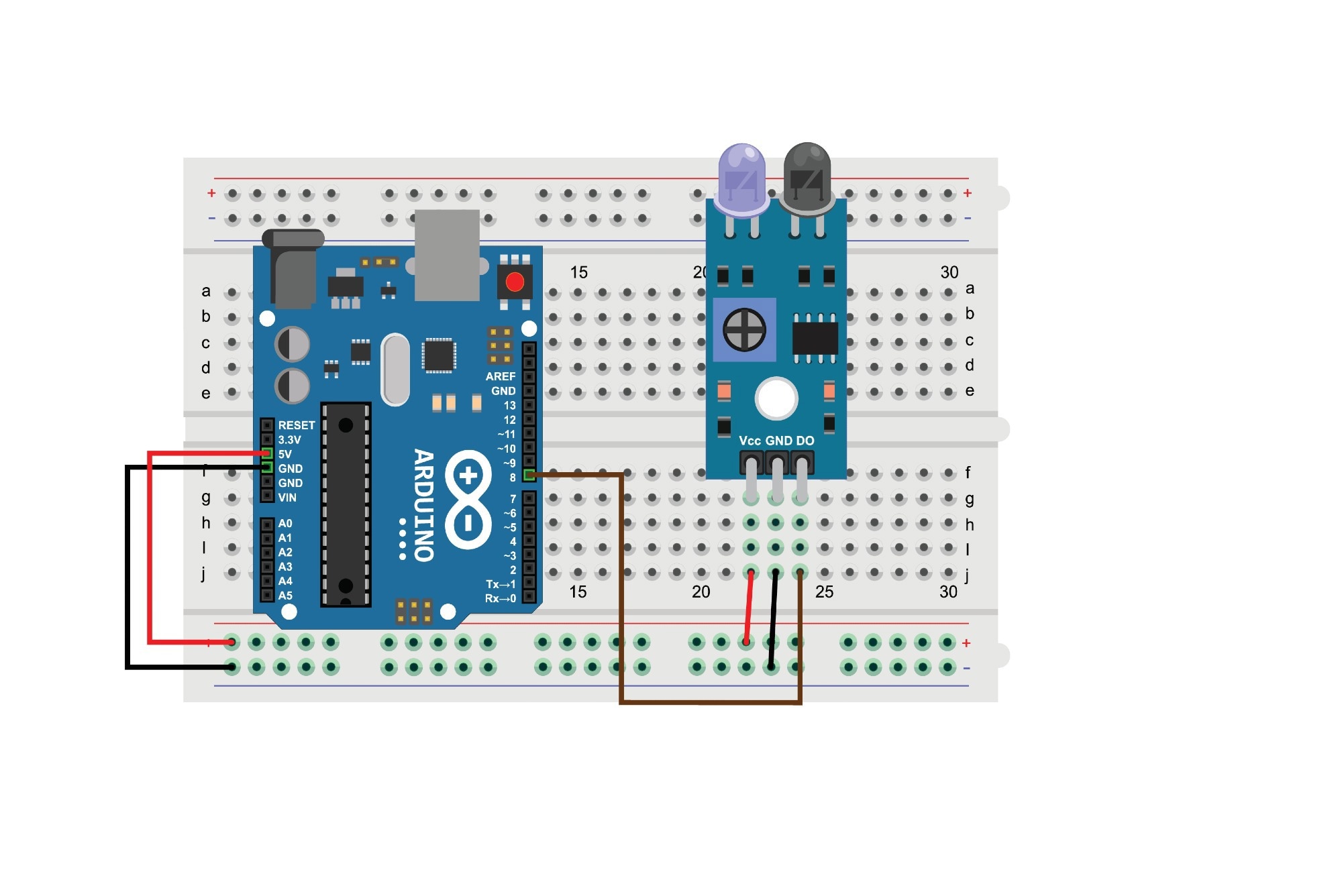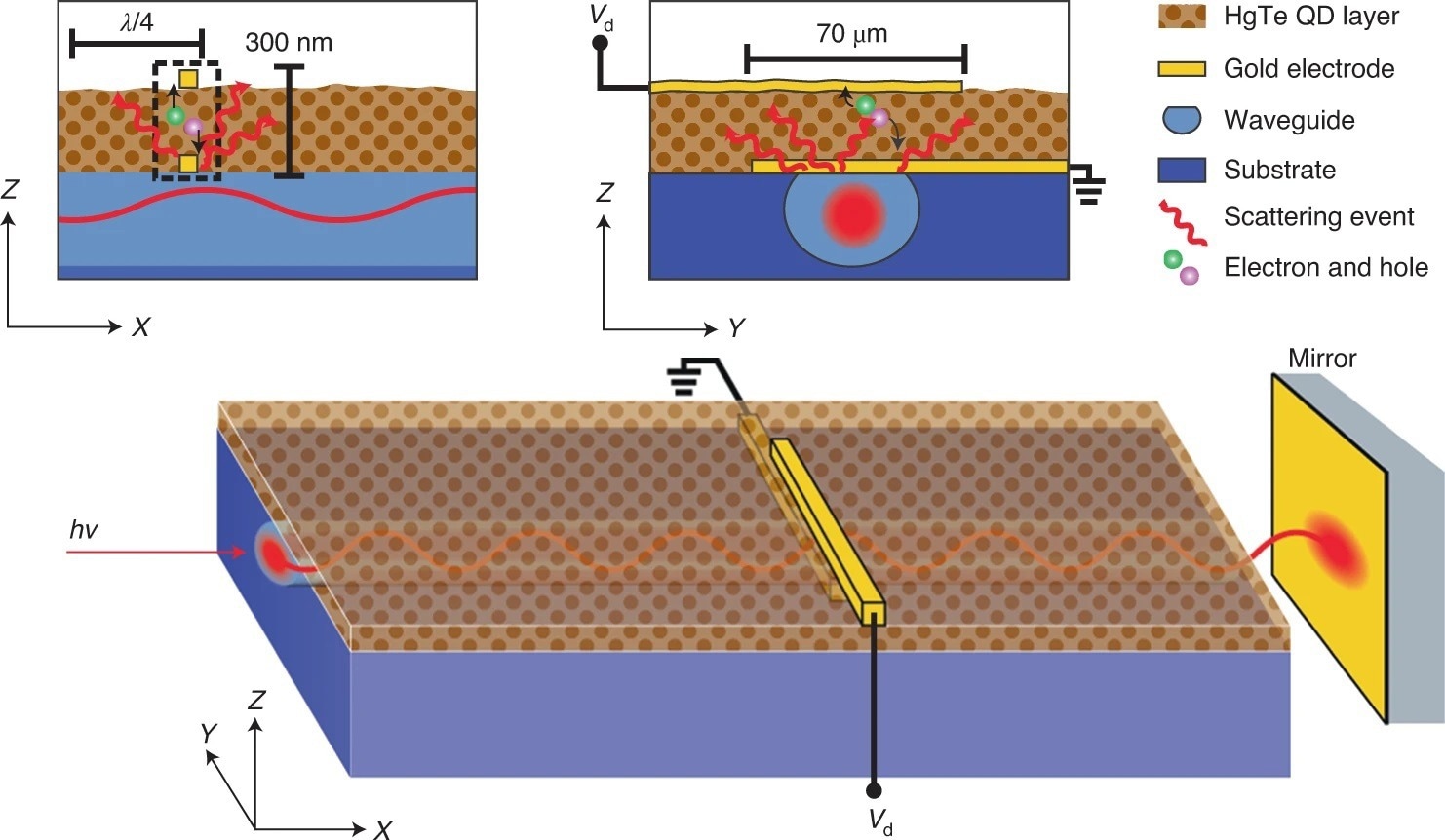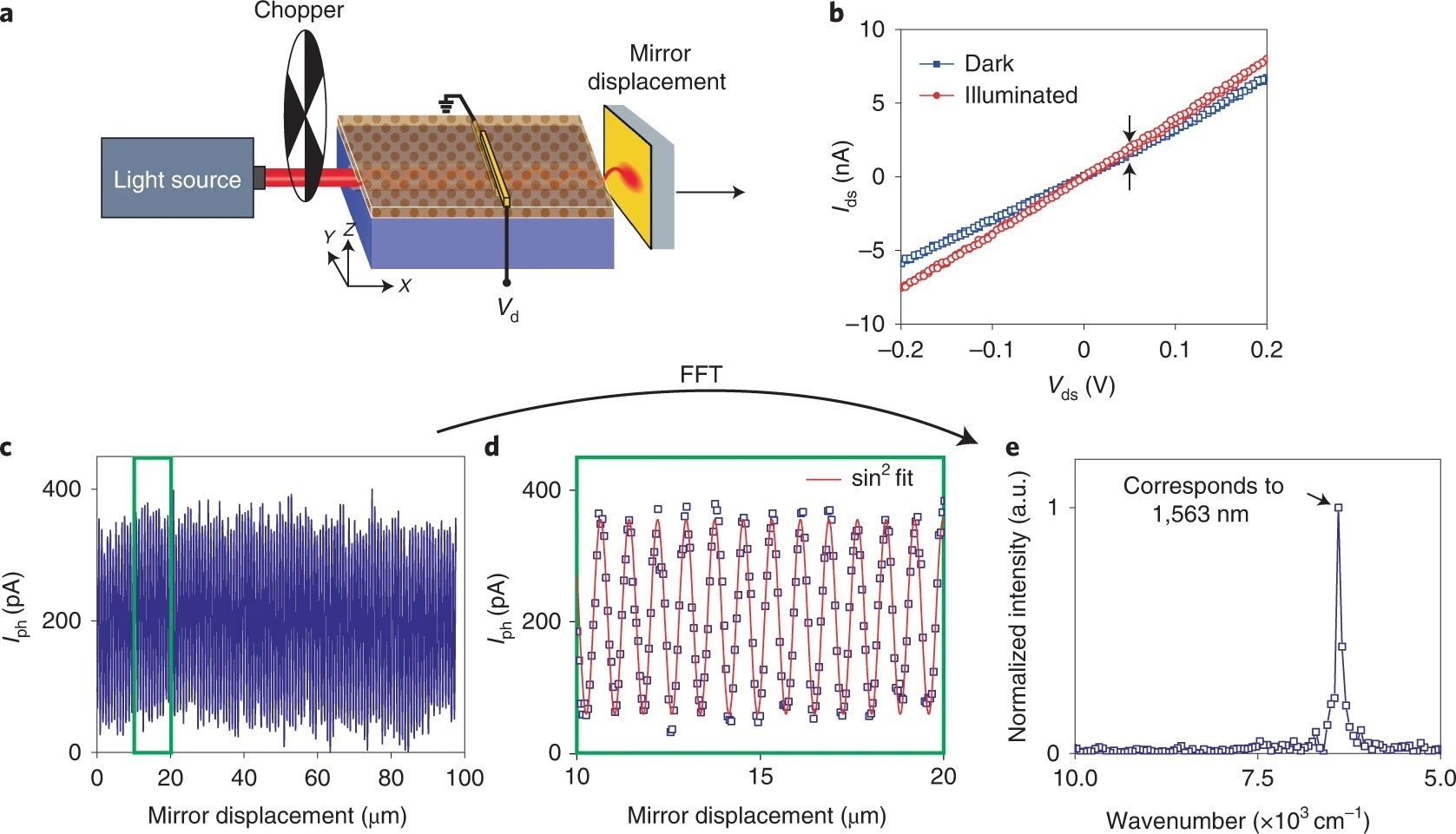Substantial miniaturization of infrared (IR) sensors is necessary for their incorporation into next-generation portable electronics, wearable devices, and small satellites. However, modern infrared (IR) detectors depend on large (and costly) technology and materials.

Study: Integrated photodetectors for compact Fourier-transform waveguide spectrometers. Image Credit: huntingSHARK/Shutterstock.com
A recent study published in Nature Photonics focuses on the shrinking of IR sensors by creating a proof-of-concept Fourier-transform waveguide spectroscope comprised of a colloidal mercury telluride quantum dot using a sub-wavelength IR sensor as a photon detector.
Miniaturized Infrared Detectors: Why Are They Important?
The downsizing of infrared spectrometers will increase their usage in consumer devices, allowing for food control, identifying dangerous compounds, and wearable technology.

Figure 1. Schematic of a waveguide spectrometer (not to scale). Waveguide spectrometer with a monolithically integrated photoconductor and the respective cross sections. The subwavelength photodetector, fabricated on top of a buried and leaky optical waveguide, consists of one bottom gold electrode functioning as a scattering centre, a photoactive HgTe colloidal QD layer and a top gold electrode. Incoming light is indicated with symbols hν, energy of photons. Image Credit: Grotevent, M. J. et al., Nature Photonics
In addition to the extremely intriguing infrared signature and functional group areas, a Fourier-transform near-infrared spectrometer functioning between 0.76 and 2.50 µm range may be employed to screen fraudulent medications and greenhouse gases such as carbon dioxide and methane. However, the specificity and selectivity of photodetectors are better in the mid-infrared spectrum.
Moreover, quantum dot-based ultracompact spectrometers are greatly required for satellite applications such as femtosatellites (space objects having a weight limit of 100 grams). These spectrophotometers are also relevant to the development of hyperspectral cameras.
Fourier-transform Infrared Spectrometers: Overview and Challenges
Fourier-transform infrared spectrometers offer a broad optical bandwidth and high accuracy in the infrared spectrum, but they are not yet fully downscaled. Even though the interferometric substrate of Fourier-transform spectrometers has been miniaturized, signal processing still requires an external image sensor.

Figure 2. Spectrometer application with a 1,570 nm laser light source. a, Schematic of the spectrometer experiment. The photosignal is modulated by a mechanical chopper (27 Hz) and the interferogram is measured as a function of mirror displacement (step size, 50 nm) (not to scale). b, Current (Ids)–voltage (Vds) characteristics of the photoconductor in dark and under illumination through the waveguide. c, Photosignal as a function of mirror displacement. d, Zoomed-in view of the acquired photosignal in c. e, Corresponding fast Fourier transformation (FFT) of the photosignal in c. Image Credit: Grotevent, M. J. et al., Nature Photonics
In recent years, extensive downsizing on spectrometer components like dispersive components and limited-range filters has been documented in many studies. Nonetheless, the downsizing of these spectrophotometers involves a trade-off between frequency range, accuracy, and visible spectrum range restrictions.
This implies that the fully integrated waveguide spectrometer cannot be made smaller than the currently existing sensors, which are too large for novel infrared sensing applications. Although the concept of downscaling a waveguide spectrometer by the monolithic incorporation of subwavelength IR sensors is not new, it has not been implemented till now.
Novel Infrared Photodetectors Based on Colloidal Quantum Dots
A colloidal quantum dot is a solution-processed nanocrystal with a diameter of less than 20 nm. This quantum dot has a tunable bandgap that is compatible with a variety of substrates. A colloidal quantum dot may also be combined with electrical devices utilizing solution-based assembly techniques to generate ordered quantum dot arrays.
Infrared (IR) photodetectors depend on non-scalable device manufacturing or cryogenic chilling (expensive and bulky). However, infrared photodetectors made of the colloidal quantum dot (QD) have unique potential in this regard. This quantum dot-based IR sensor may be constructed on a wide range of substrates, and the spectral sensitivity can be modified by adjusting the size and chemical composition of the quantum dot.
For instance, the mercury telluride (HgTe) absorption band can encompass the infrared and visible radiation range by simply altering the diameter of the quantum dot. However, the HgTe quantum dot-based infrared sensors have not yet been monolithically incorporated into waveguide spectrometers for downsizing applications.
Highlights of the Current Study
In this study, a team of researchers led by Empa researcher Ivan Shorubalko built a proof-of-concept compact Fourier-transform waveguide spectroscope using a sub-wavelength IR photodetector as a photon sensor. The new infrared detector employs the colloidal mercury telluride quantum dot and is interoperable with metal-oxide-semiconductor equipment.

Figure 3. Spectrometer application with the modulation of mirror in addition to mirror displacement. a, Schematic of the experiment with two laser light sources coupled simultaneously (1,570 nm, 300 μW; 1,310 nm, 330 μW) (not to scale). b, Photosignal as a function of mirror displacement. c, Zoomed-in view of the acquired photosignal in b. d, Corresponding fast Fourier transformation of the photosignal in b. Image Credits: Grotevent, M. J. et al., Nature Photonics
The photodetector's monolithic incorporation reduces the imaging sensor’s width by a ratio of 1,000, leading to a large bandwidth, ultracompact (below 100 μm × 100 μm × 100 μm) infrared spectroscope with a modest spectral precision of 50 cm-1.
This ultra-compact spectrophotometer, made up of a HgTe quantum dot, permits optical-analytical measuring tools to be integrated into consumer devices and space technologies.
Future Outlook
“The monolithic integration of subwavelength IR photodetectors has a tremendous effect on the scaling of Fourier-transform waveguide spectrometers”, says Empa researcher Ivan Shorubalko. “But this may also be of great interest for miniaturized Raman spectrometers, biosensors, and lab-on-a-chip devices as well as the development of high-resolution snapshot hyperspectral cameras.”
Monolithically coupled nanometric photodetectors are essential for achieving the maximum downsizing potential of Fourier-transform waveguide spectrometers. According to this research, an approach for fabricating such sensors entails avoiding temperature-sensitive production stages.
Applying photodiodes with better photosensitivity and the expansion of wavelength selectivity into the mid-wavelength infrared range by deploying a bigger HgTe quantum dot may lead to further advancements in the development of miniaturized infrared detectors.
Reference
Grotevent, M. J. et al. (2022). Integrated photodetectors for compact Fourier-transform waveguide spectrometers. Nature Photonics. Available at: https://doi.org/10.1038/s41566-022-01088-7
Disclaimer: The views expressed here are those of the author expressed in their private capacity and do not necessarily represent the views of AZoM.com Limited T/A AZoNetwork the owner and operator of this website. This disclaimer forms part of the Terms and conditions of use of this website.